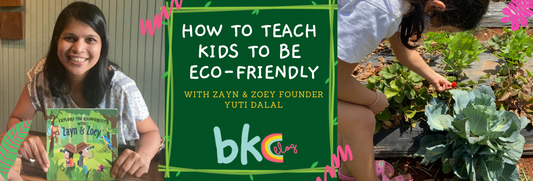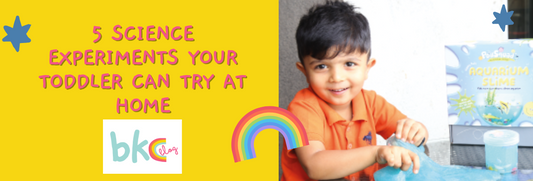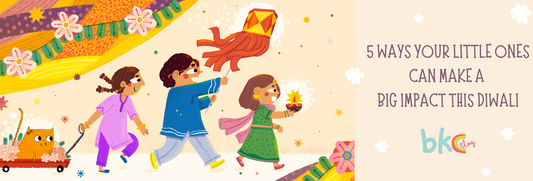We need freshwater for most of our daily needs. But this stash of good water is rapidly depleting, thanks to increased human consumption and wastage. Let this year’s festival of colours be a reminder for all of us to conserve water. This article will tell you how.

Our freshwater supply has been threatened due to reckless overuse. Water wastage during festivals only makes matters worse. But it’s not too late to conserve water. The first steps begin at home. In this article, we will give you pointers on how to conserve water at home and list a few, fun Holi-inspired activities for your child.
Tips to Conserve Water for Holi
The pointers listed below merely serve as a jumping-off point to teach your child about the larger need to conserve water. You can start by talking to them about the unequal distribution of water resources on the Earth and its consequences. And how human efforts have further depleted already-limited resources.
-
Educate your child about the need to conserve water.
-
Decide beforehand how much water you want to use for Holi games, and limit the quantity by number of buckets.
-
Let your child know that they are only allowed to play with the water that’s been stored. Be firm in your decision if they want more.
-
Play with organic colours and flowers. They are not just non-toxic and organic, but they also wash off easily with less water.

-
To play with colours, prepare a separate space in the backyard (if you have one) or a common play area. Line the floor area with tarpaulin. This way, clean-up can be done with a limited quantity of water.
-
Discourage water balloons. Not only do they use up a lot of water, but can also cause serious injuries to your child’s eyes, ears, and skin. The balloons themselves aren’t biodegradable either.
-
Make sure your child bathes only when they are done playing. You don’t want them to go back to the colours again.
3 Holi Activities That Use Less or No Water
Just because you’re conserving water doesn’t mean you have to compromise on the fun. Holi is the festival of colours after all, and colours come in many forms. Help your child explore their creative side through these exciting and innovative Holi-themed art & craft activities.
Or, try these three handpicked activities, to ensure your child does not feel deprived of fun while conserving water this Holi season. Trust us when we say that they will not feel they’re missing out on anything once these activities are underway.
1. Oobleck Play
Any activity that involves sensory play meets that happy balance of promoting motor skill and cognitive development, while also being immensely satisfying for a child!
Enter Oobleck play: this colourful and messy activity inspired by a Dr. Seuss’ book is at heart a science experiment with just a few key ingredients. Before we get into the messy details, here is the science behind the magic.
Similar to quicksand but safe for children, Oobleck is classified as a non-Newtonian liquid, that is, it is neither solid nor liquid. This gooey and slimy fluid feels solid on the surface, but as you break through the surface and dip your fingers in, it feels like water. Under pressure the water particles are pushed out, while the cornstarch particles form a solid layer. However, when you move your hands slowly through it, the cornstarch particles give way to the water particles.
What you need
-
2 cups of cornstarch
-
1 cup of water
-
A mixing bowl
-
A spatula
-
Food colouring of bright colours like red, green, blue, yellow, purple, etc.
How you do it
-
In a mixing bowl, add cornstarch and water.
-
With a spatula, stir the mixture slowly till it reaches a slimy consistency. You can enlist your child’s help for this.
-
Add a few drops of food colouring of as many different colours as you have to the mixture.
-
To achieve the perfect gooey consistency your child will love, adjust the amount of cornstarch and water, depending on whether the mixture feels too dry or too runny.
Note: This messy activity can result in stains in clothes and furniture, so please proceed with caution.
2. Holi Crayons
Not sure what to do with what looks like a graveyard of your child’s old crayons, too chipped away to be of any use? Well, you can create a new set of crayons out of them. Not only does this activity involve no water, it teaches your child about recycling.
What you need
-
Old crayons
-
Silicone baking moulds in fun shapes
-
Mortar and pestle, optional
-
Baking tray, optional
-
An oven
How to do it
-
Have your children peel off the crayons that may still have their wrappers on.
-
Break the crayons down to small pieces. You may find it easier to grind them using a mortar and pestle. Don’t hesitate to mix up the colours.
-
Have your child fill up the silicon mould with these small pieces.
-
Place the mould on a baking tray, and bake the pieces in the mould for 20 minutes at 110°C till they melt.
-
Carefully remove the tray from the oven.
-
Leave them to harden, and then carefully remove the new hardened crayons from the mould.
3. DIY Rangoli
There’s nothing quite like the joy of watching things transform and take new shape in front of one’s eyes. This activity involves an exciting transformation with the help of Ooly’s Magic Neon Puffy Pens. This Holi, help your child create a rangoli that pops!
What you need
-
A drawing paper sheet
-
A pencil
-
Ooly Magic Neon Puffy Pens
-
A hair dryer
How to do it
-
On a drawing sheet, help your child trace the mandala with the pencil.
-
Your child can then fill in the shapes on the paper with colours of their choice from the Puffy Pens set.
-
Once the ink is mostly dry, use the hair dryer to blow warm air on the paper for about a minute while your child watches with wonder from a safe distance. (For better results, hold the hair dryer close to the paper and at an angle.)
-
As the ink reacts to the heat, it will puff up to create a 3D effect.
Have fun creating new, eco-friendly Holi traditions, and extend your conservation efforts beyond the festival. When your child understands the greater good behind this, they themselves will take on a more proactive role to save water everyday, in whatever little way possible. All you have to do is to be a guiding light. Oh, and practise what you preach.





